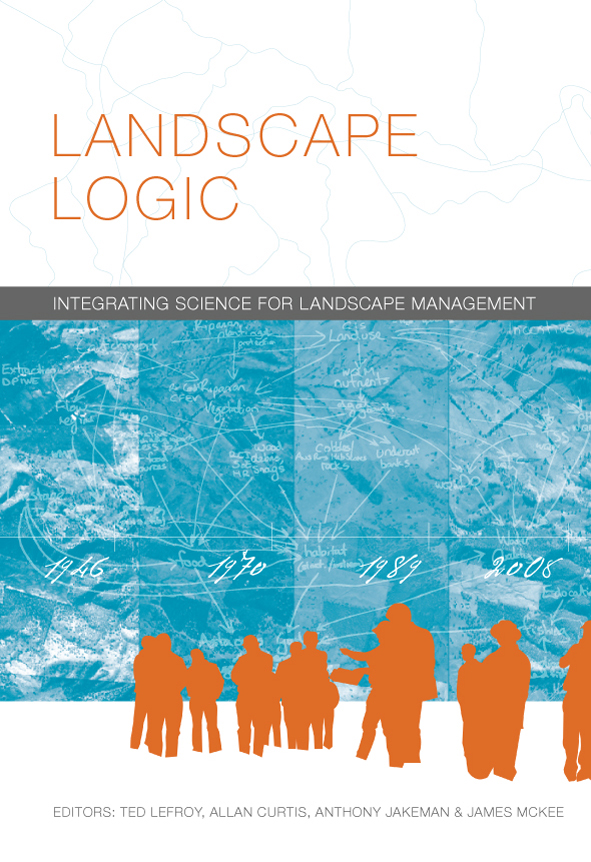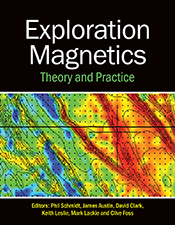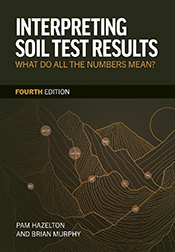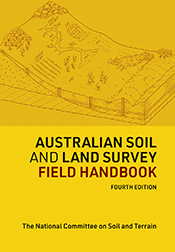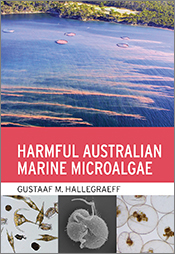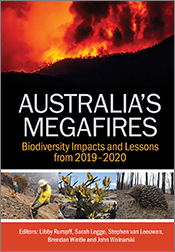Landscape Logic
Integrating Science for Landscape Management
Edited by: Ted Lefroy, Allan Curtis, Anthony Jakeman, James McKeeCase studies examine the effectiveness of environmental programs to improve our waterways, soils and natural vegetation.
In 2005, researchers from four Australian universities and CSIRO joined forces with environmental managers from three state agencies and six regional catchment management authorities to answer the question: 'Can we detect the influence of public environmental programs on the condition of our natural resources?' This was prompted by a series of national audits of Australia's environmental programs that could find no evidence of public investment improving the condition of waterways, soils and native vegetation, despite major public programs investing more than $4.2 billion in environmental repair over the last 20 years. + Full description
Landscape Logic describes how this collaboration of 42 researchers and environmental managers went about the research. It describes what they found and what they learned about the challenge of attributing cause to environmental change. While public programs had been responsible for increase in vegetation extent, there was less evidence for improvement in vegetation condition and water quality. In many cases critical levels of intervention had not been reached, interventions were not sufficiently mature to have had any measurable impact, monitoring had not been designed to match the spatial and temporal scales of the interventions, and interventions lacked sufficiently clear objectives and metrics to ever be detectable. In the process, however, new knowledge emerged on disturbance thresholds in river condition, diagnosing sources of pollution in river systems, and the application and uptake of state-and-transition and Bayesian network models to environmental management.
The findings discussed in this book provide valuable messages for environmental managers, land managers, researchers and policy makers.
- Short descriptionNews
This title is no longer available in print format, but can still be purchased as an eBook via the eRetailer links above.
Reviews
"The editors are to be congratulated on bringing together the work of over 50 contributors in a coherent manner."
Mark Robinson, Experimental Agriculture, Vol 49 (1), 2013
"The book would be of equal value as a resource for research institutions, catchment management groups, non-government resource management organisations throughout Australia, and others pursuing IRM [Integrated Resource Management] in other parts of the world."
Chris Carroll, Australasian Journal of Environmental Management, Vol 21(2), 2014, pp. 221-222
Details
ePDF | April 2012ISBN: 9780643103559
Publisher: CSIRO Publishing
Available from eRetailers
ePUB | April 2012
ISBN: 9780643103566
Publisher: CSIRO Publishing
Available from eRetailers
Features
- Techniques to detect and attribute change in water quality and vegetation extent and condition
- At state, region or catchment scale (broad patterns of change);
- At property or tenure scale (who did what, when, where, why, public vs private investment)
- At site scale (change in underlying ecological processes at the scale of intervention).
- Multiple lines of historic and contemporary evidence being used to detect change in water quality and vegetation condition
- Tools and techniques to integrate social and biophysical knowledge and understand the history and direction of landscape change
- The application of Bayesian decision networks as integration frameworks for multidisciplinary studies and the basis for decision support tools for environmental managers
Contents
PrefaceContributors
1 Introduction: improving the evidence base for natural resource management
Part I Managing water quality in agricultural catchments
2 Modelling the influences of land use and land management on water quality
3 Measuring and modelling the impacts of land use on ecological river condition
4 Improving the utility and sensitivity of estuarine monitoring
5 Understanding the effectiveness of vegetated streamside management zones for protecting water quality
6 Management of Tasmania’s riparian zones by rural landholders
7 Spatial diagnosis of catchment water quality: using multiple lines of evidence
8 Lessons from integrated bio-economic modelling in the George catchment, Tasmania
9 Lessons from studying water quality in agricultural catchments
Part II Vegetation change in rural landscapes
10 Measuring change in vegetation extent at regional and property scales
11 Exploring landscape history through integrated participatory research: experiences from Victoria
12 Development of a state-and-transition model to guide investment in woodland vegetation condition
View the full table of contents.
Authors
Ted Lefroy is an agricultural scientist who worked in rural extension in Australia and Papua New Guinea for 15 years before taking up a research career focused on managing the environmental consequences of agriculture. In 2005 he was appointed Director of the Centre for Environment at the University of Tasmania which was established to foster interdisciplinary environmental research.Allan Curtis is a strategic research professor at Charles Sturt University. His research examines the social dimensions of regional natural resource management. From 2002 to 2004 he was the social sciences program leader at the Bureau of Rural Sciences and more recently, the foundation director of the Institute for Land, Water & Society at CSU.
Anthony Jakeman is an environmental modeller who has worked for over a decade on integrated assessment and decision support of water resource-related issues. His emphasis has been on working with stakeholders to frame the decision problems, develop conceptual models and select appropriate modelling paradigms and scenarios to explore catchment health. Tony is Director of the Integrated Catchment Assessment and Management Centre at the Australian National University.
James Mckee has a background in agricultural science but has spent most of his career working in natural resource management in various states of Australia. He has worked primarily in environmental planning and monitoring and evaluation. James is the CEO of NRM North, the regional natural resource management body for Northern Tasmania.


